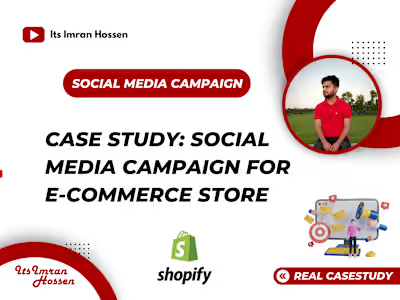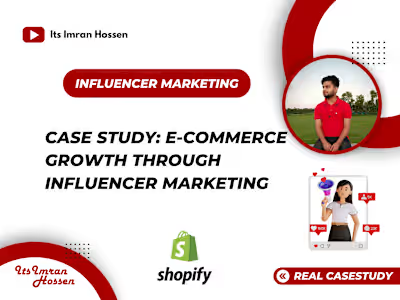Project: Email Marketing Automation for E-commerce store
setting up effective email marketing automation for an e-commerce store can significantly boost customer engagement, retention, and sales. Here's a step-by-step guide to help you create a successful email marketing automation strategy:
1. Define Your Goals:Clearly outline your objectives for email marketing, such as increasing sales, recovering abandoned carts, nurturing leads, or promoting new products.
2. Choose an Email Marketing Platform:Select a reliable email marketing platform that offers automation features, such as Mailchimp, Klaviyo, or HubSpot.
3. Segment Your Audience:Divide your customer base into segments based on factors like purchase history, preferences, browsing behavior, and demographics.
4. Welcome Series:Set up an automated welcome email series for new subscribers. Deliver a warm welcome, introduce your brand, and highlight popular products or content.
5. Abandoned Cart Recovery:Create a series of automated emails to remind customers of their abandoned carts and entice them to complete their purchases with compelling product descriptions and incentives.
6. Product Recommendations:Use customer data and browsing history to send personalized product recommendations based on their interests and previous purchases.
7. Post-Purchase Follow-ups:Send automated follow-up emails after a purchase to thank customers, request reviews, and suggest related products or complementary items.
8. Upselling and Cross-Selling:Automate emails that suggest upgrades or complementary products to customers who have made a purchase.
9. Birthday and Anniversary Emails:Send automated emails to celebrate customers' birthdays and anniversaries with exclusive discounts or special offers.
10. Re-Engagement Campaigns:Identify inactive subscribers and create automated re-engagement emails with enticing offers to bring them back to your store.
11. Seasonal and Holiday Campaigns:Plan and automate emails for major holidays, events, and seasonal promotions to drive sales during peak shopping periods.
12. Educational Content:Share valuable content related to your products, industry trends, or how-to guides through automated educational emails.
13. Exclusive Offers and Flash Sales:Send time-sensitive offers and flash sale announcements to create a sense of urgency and boost conversions.
14. Feedback and Surveys:Automate emails to gather customer feedback and insights through surveys, helping you improve your products and services.
15. Unsubscribe Management: Make sure your automated emails include easy-to-find unsubscribe links to comply with email regulations.
16. A/B Testing: Regularly test different email subject lines, content, and CTAs to optimize open rates, click-through rates, and conversions.
17. Analytics and Tracking:Use analytics tools to track key metrics such as open rates, click-through rates, conversion rates, and revenue generated from email campaigns.
18. Continuous Optimization:Regularly review performance metrics, analyze customer behavior, and adjust your automation workflows for better results.
19. Compliance with Regulations:Ensure your email marketing complies with relevant regulations such as CAN-SPAM Act or GDPR.
20. Personalization and Dynamic Content:Utilize dynamic content and personalization tokens to make emails more relevant and engaging for each recipient.
implementing these steps, you can create a well-rounded email marketing automation strategy that not only increases sales but also enhances customer relationships and brand loyalty.
Like this project
Posted Aug 12, 2023
Developed and executed an email marketing automation, resulting in a 20% increase in customer engagement and a significant improvement in conversion rates.






